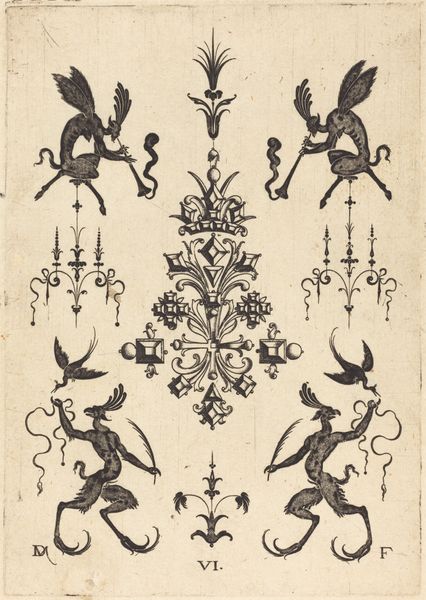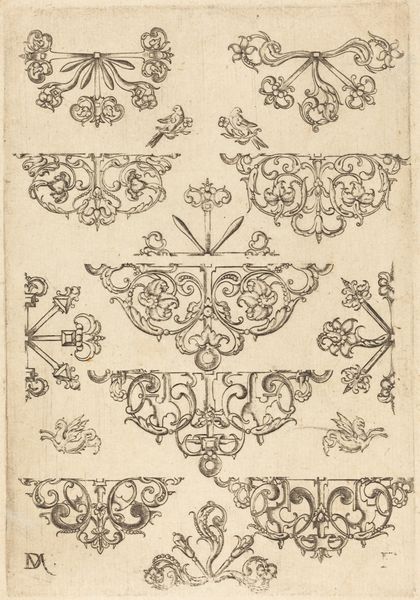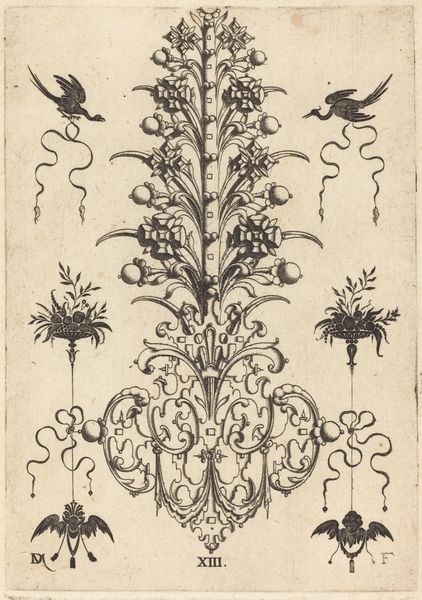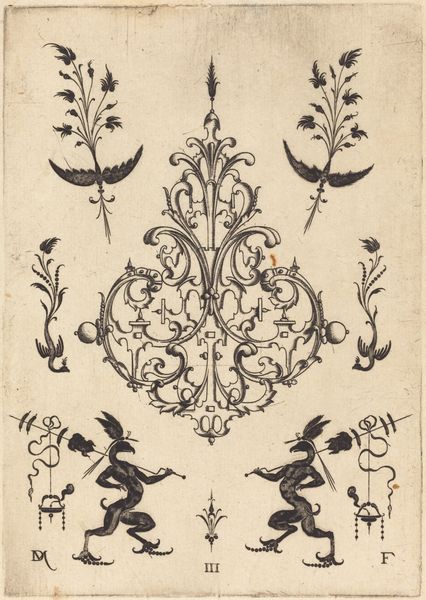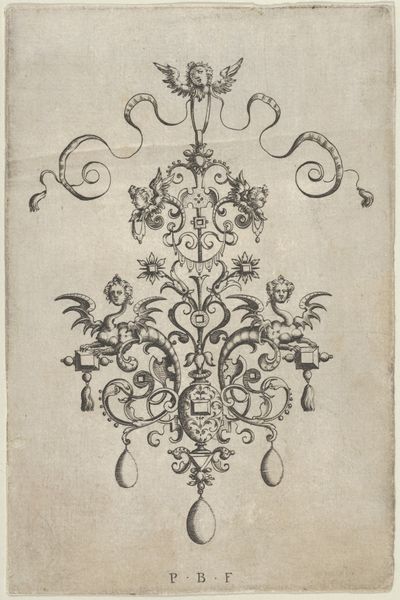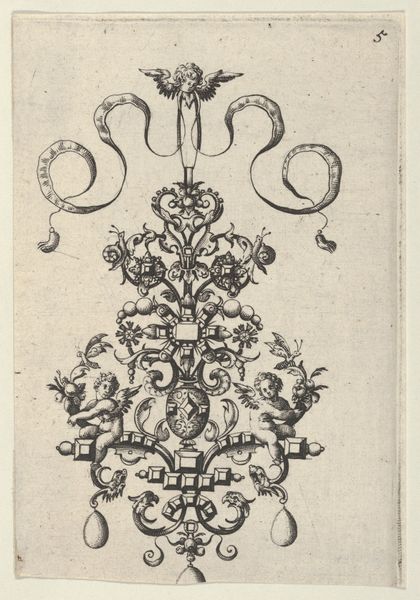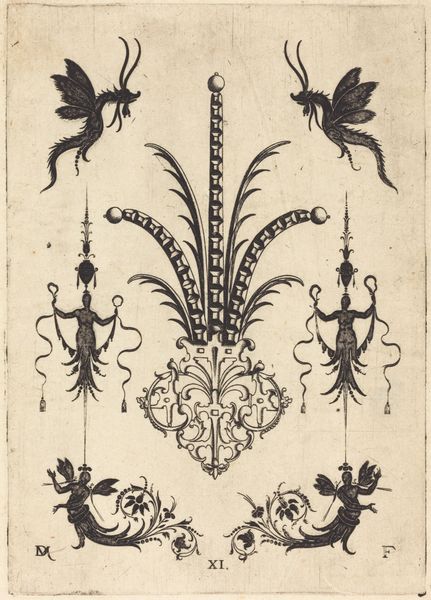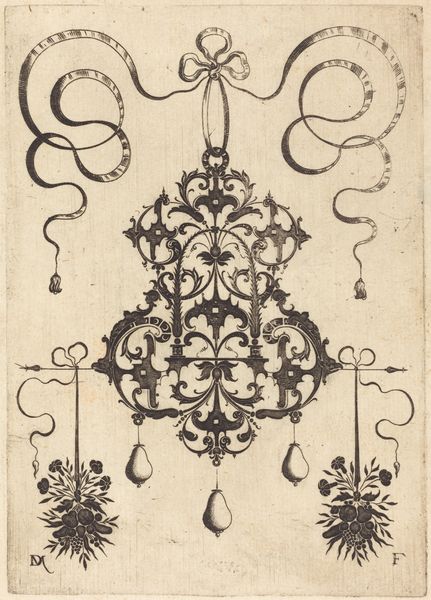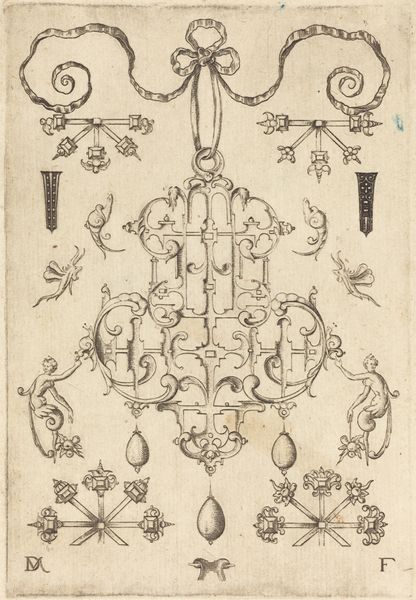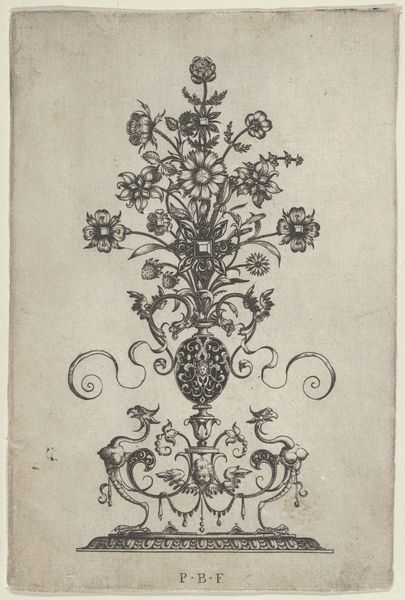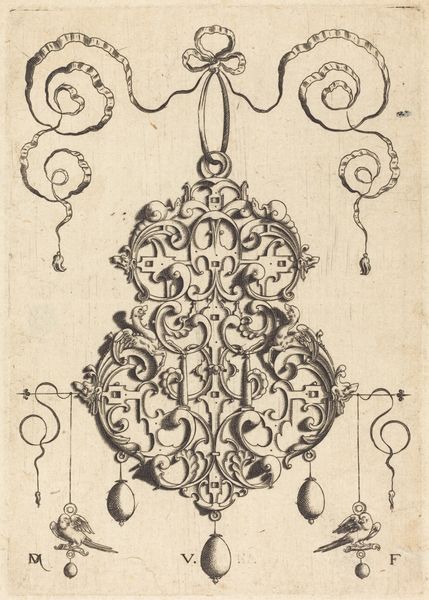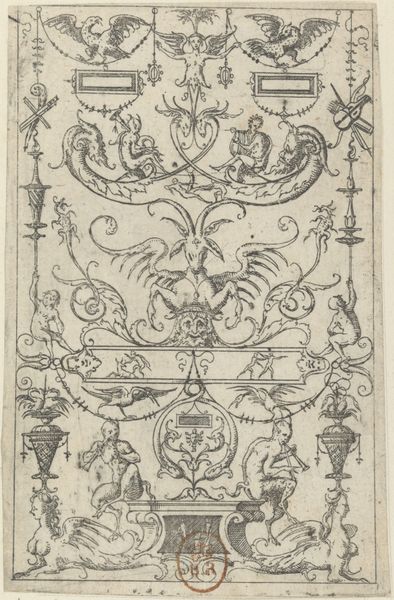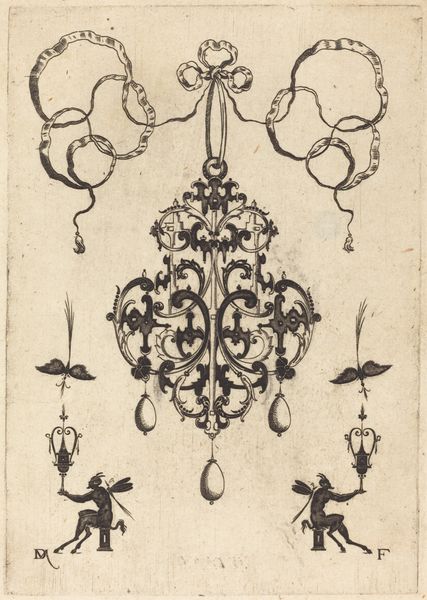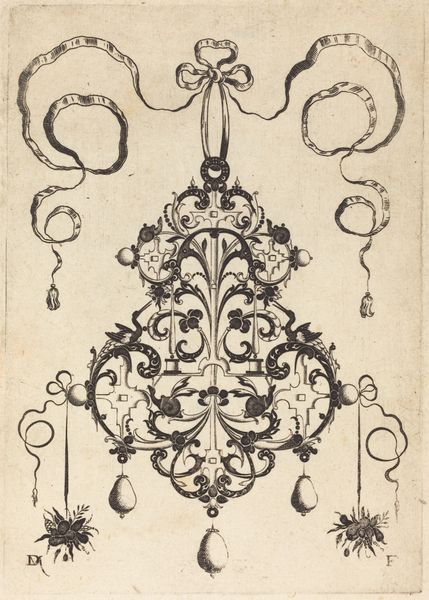
drawing, ink, engraving
#
drawing
#
11_renaissance
#
ink
#
geometric
#
engraving
Dimensions: height 129 mm, width 91 mm
Copyright: Rijks Museum: Open Domain
Curator: Let's turn our attention to this intriguing drawing by Daniel Mignot, titled "Grote broche in de vorm van een hyacint," dating back to after 1593. The medium is ink and engraving. Editor: My initial impression is that it evokes a certain restrained grandeur—a sense of ornamentation held in check. It's meticulously balanced, symmetrical almost to a fault. Curator: Indeed. Mignot masterfully employs line and form here. Note the bilateral symmetry: hybrid animalistic forms bookending the hyacinth pattern. What readings are enabled? Editor: The controlled aesthetic speaks volumes about the artistic constraints of the late 16th century, particularly for women expected to wear such brooches. One imagines the brooch as not merely decorative but also emblematic of the wearer's status and conforming roles. The engraving's pattern flattens natural forms into rigid decorative objects which echoes social impositions upon the subject who wore them. Curator: An interesting observation—connecting personal adornment with larger social forces and symbolic subjugation. However, if we scrutinize the linear rhythms and proportional relationships, what emerges is the elegance and structural cohesion Mignot achieves using Renaissance geometric conventions. Consider how the eye is directed upwards by the repeated shapes. Editor: While I recognize the sophistication of Mignot's technical execution, I can't divorce it from its sociohistorical setting. These elaborate patterns were often vehicles for conveying privilege and reinforcing hierarchical power structures within courtly settings. The fantastic birdlike ornaments seem ripped from nature yet subjugated as if in captivity—they become coded for similar restrictions faced by those members of society whose agency was restrained. Curator: Do you perceive any semiotic indicators? Editor: I would say so—for instance, the avian forms could act as heraldic crests or metaphors for aspirations of dominance, tempered by the feminine botanical order. It makes for some serious tension when understood under intersectional analysis. Curator: Your attention to those sociopolitical resonances, especially given the decorative nature of this artwork, enriches my own understanding of this Renaissance objet. Editor: And I, in turn, appreciate your reminder to remain grounded in a close observation of form.
Comments
No comments
Be the first to comment and join the conversation on the ultimate creative platform.
